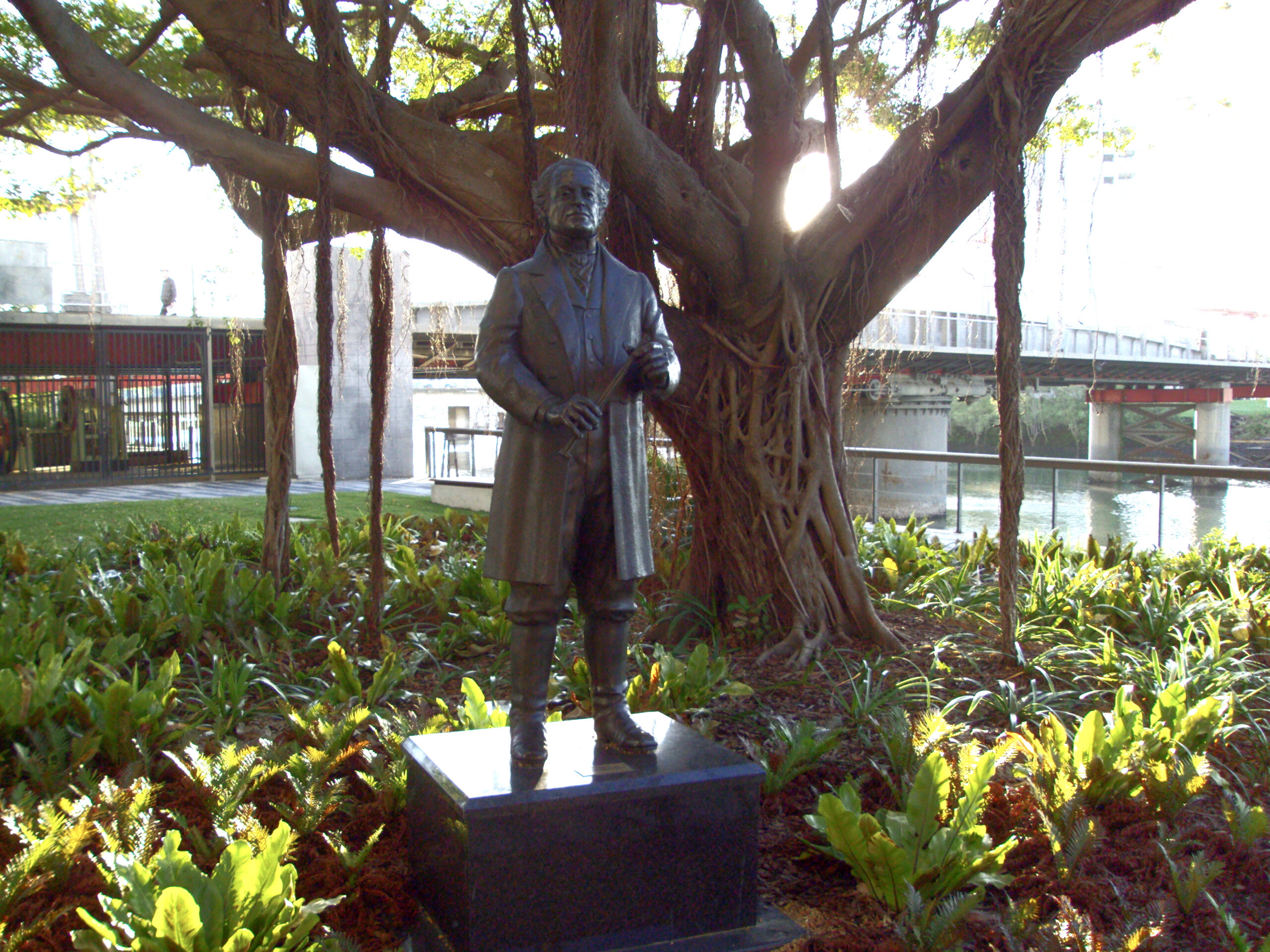We are pleased to present the case on a statue of Robert Towns in Townsville, Australia, as part of a series of in-depth studies for the Contested Histories Initiative. We hope that this series will provide insights and lessons learned for engaging with and addressing instances of disputed historical legacies in public spaces. This case comes amid global debate on historical statues and monuments, related to and inspired by this summer’s Black Lives Matter protests, and calls for a reckoning of Australia’s colonial history.
Townsville, in north Queensland, is home to a life-sized statue of its namesake Robert Towns. Unlike many of the cases catalogued by Contested Histories, this statue was erected in recent history–in 2004–with funds from the local council, in spite of instant controversy. Towns was a merchant entrepreneur and ‘blackbirder’, whose ship ‘Don Juan’ brought one of the earliest shiploads of South Sea Islanders from present-day Vanuatu to labour on his Queensland properties in 1863.
What is ‘blackbirding’?
‘Blackbirding’ refers to the kidnapping or luring of South Sea Islanders, mostly from Vanuatu and the Solomon Islands, but it also included ‘recruiting’ from parts of New Caledonia, Papua New Guinea, Tuvalu, Kiribati and Fiji. Blackbirding occurred from 1863 until the early 1900s and saw more than 62,000 South Sea Islanders transported to Australia for labour in pastoral, sugar and maritime industries.
There exists debate as to whether blackbirding can be likened to enslavement, and the (il)legality of the process by which South Sea Islanders were recruited for indentured labour. The Australian South Sea Islanders organisation (ASSI) notes that the degree of choice in recruitment does not negate the reality of exploitation, nor is the distinction between kidnapping and choice so simple. Professor Clive Moore, a leading researcher on South Sea Islander history at the University of Queensland, coined the term ‘cultural kidnapping’ to refer to the exploitation that many Islanders unknowingly signed up for. According to Moore, “whether you call them slaves or not, they [blackbirded Islanders] definitely worked in slave-like conditions. It was often horrific.”
Still standing
The statue of Towns remains despite controversy. While there have been calls for its removal, Emelda Davis, president of ASSI, argues instead that “there needs to be a greater understanding, a broader discussion”, that “the full truth needs to be told”. Removal, which has the potential to become erasure, is often a quick-fix which leaves the underlying cause of the dispute unconsidered and unresolved. In the case of Towns, simply removing his statue risks burying the legacy of his involvement in blackbirding.
Engagement in discussion and the notion of ‘full truth’ is central to the work of Contested Histories. Contextualising disputed historical sites can balance and/or resignify narratives concerning historical figures and events to present multiple perspectives, including those that have been and perhaps remain enduringly under-represented, marginalised and oppressed. Moreover, additive elements can act as a means through which uncomfortable histories can be reflected upon and worked through for deeper, more nuanced understandings of the past and present. It is here that the educative potential of public spaces shines through, potential which may have otherwise been lost with hasty removal.
For Towns, who signifies the white settler majority in Australia, the installation of a counter monument may present an effective remedy. The creation of a counter monument offers opportunities for dialogue, reflection and learning; a means to decentre the colonising gaze of Robert Towns and address intergenerational trauma from blackbirding.
Image by denisbin titled “Statue of Robert Towns in central Townsville. The man after whom the city was named.” CC BY-NA 2.0.
Further readings
http://www.assipj.com.au/southsea/wp-content/uploads/docs/02_blackbirding_kidnapping_and_slavery.pdf
Drawing on more than 160 case studies from Europe, Asia, Africa and the Americas, the Contested Histories project seeks to identify underlying causes for disputes dealing with monuments, memorials, statues, street names, building names and other physical markers of historical legacies. The aim is to distil “best practices” for decision-makers, policy advisors, civil society activists, scholars and other stakeholders faced with similar disputes in their communities or societies. The case studies will also inform the development of educational resources that address disputed historical legacies and highlight the complexity of historical memory.
Call for images: photographs documenting disputes are central to our research and the team is often constrained by images that are copyrighted. If you have an image of a contested monument, street name, statue or other physical representation of historical legacies in public spaces, please share them with us! Appropriate credits will be given.
For more information and to share images, email info@ihjr.org.













